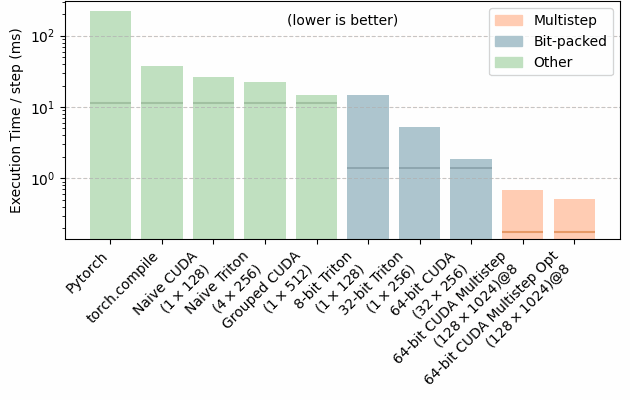I recently went to NeurIPS, the world’s largest academic AI conference. This was a multi-purpose trip: present a poster at the MechInterp Workshop and hobnob with other AI Safety researchers; get a general impression of state of the art in AI, particularly the gamedev/creative space, and represent Timaeus, the company I’ve recently joined.
Continue readingSilksong Quick Hints
I’ve been enjoying Silksong a lot, but sadly it is not a game where you can trust the developers to leave good signposting and guidance. I don’t like to use game guides, so I ended up wasting a lot of time in this game, and then had to resort to guides anyway.
Here are some very light spoilers that will abate the worst of these. I’m not mentioning alternate paths, just things that the developers likely intended you to find, but might not. Collectively, I think this would have saved me 10 hours of pain.
Continue readingInfinite Random Rhombus Tilings
Everyone loves the Townscaper grid. It’s got a a nice organic look, while still being quadrilateral tiles, somewhat regular, and reasonably easy to implement. But it has some annoyances. I’ve finally managed to find my own design of grid that has a very similar look, but fixes these problems.
Continue readingMore Accelerated Game of Life
I got a good comment on my previous article about implementing the Game of Life in CUDA pointing out that I was leaving a lot of performance at the table by only considering a single step at once.
Their point was that my implementations were bound by the speed of DRAM. An A40 can send 696 GB/s from DRAM memory to the cores, and my setup required sending at least one bit in each direction per-cell per-step, which worked out at 1.4ms.
But DRAM is the slowest memory on a graphics card. The L1 cache is hosted inside each Streaming Multiprocessor, much closer to where the calculations can occur. It’s tiny, but has an incredible bandwidth – potentialy 67 TB/s. Fully utilizing this is nigh impossible, but even with mediocre utilization we’d do far better than before.
Continue readingThe Culture Novels as a Dystopia
A couple of people have mentioned to me: “we need more fiction examples of positive AI superintelligence – utopias like the Culture novels”. And they’re right, AI can be tremendously positive, and some beacons lit into the future could help make that come around.
But one of my hobbies is “oppositional reading” – deliberately interpreting novels counter to the obvious / intended reading. And it’s not so clear to me that the Culture is all it is cracked up to be.
Continue readingAccelerated Game Of Life with CUDA / Triton
Let’s look at implementing Conway’s Game of Life using a graphics card. I want to experiment with different libraries and techniques, to see how to get the best performance. I’m going to start simple, and get increasingly complex as we dive in.
The Game Of Life is a simple cellular automata, so should be really amenable to GPU acceleration. The rules are simple: Each cell in the 2d grid is either alive or dead. At each step, count the alive neighbours of the cell (including diagonals). If the cell is alive, it remains alive if 2 or 3 neighbours are alive. Otherwise it dies. If the cell is dead, it comes ot life if exactly 3 neighbours are alive. These simple rules cause an amazing amount of emergent complexity which has been written about copiously elsewhere.
For simplicity, I’ll only consider N×N grids, and skip calculations on the boundary. I ran everything with an A40, and I’ll benchmark performance at N=216 . For now, we’ll store each cell as 1 byte so this array is which equates to 4 GB of data.
All code is shared in the GitHub repo.
Continue readingThe 800,000 Hours Career Guide
Since the invention of the Methuselah Treatment, we at 80,000 Hours have updated our career planning framework to address extended lifespans. This guide presents our evidence-based recommendations for maximizing your impact over a 1000-year career.
3 minute read time
Continue readingClaude is a Ravenclaw
I’m in the midst of doing the MATS program which has kept me super busy, but that didn’t stop me working on resolving the most important question of our time: What Hogwarts House does your chatbot belong to?
Continue readingMy Failed AI Safety Research Projects (Q1/Q2 2025)
This year I’ve been on sabbatical, and have spent my time upskilling in AI Safety. Part of that is doing independent research projects in different fields.
Some of those items have resulted in useful output, notably A Toy Model of the U-AND Problem, Do No Harm? and SAEs and their Variants.
And then there are others that I’ve just failed fast, and moved on.
I’ve detailed those projects that still have something to say, even if it’s mostly negative results.
Find them on LessWrong.
A Technique of Pure Reason
Looking a little ahead into the future, I think LLMs are going to stop being focused on knowledgeable, articulate chatbots, but instead be more efficient models that are weaker in these areas than current models, but relatively stronger at reasoning, a pure-reasoner model. The rest will be bolted on via tool-use and other scaffolding.





